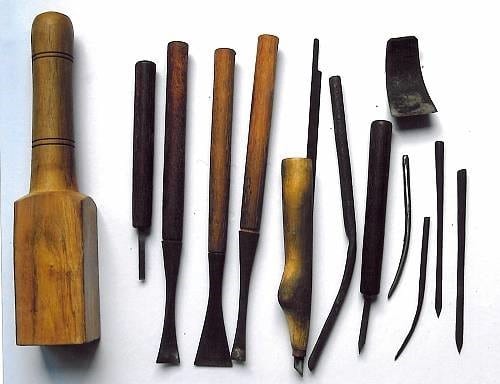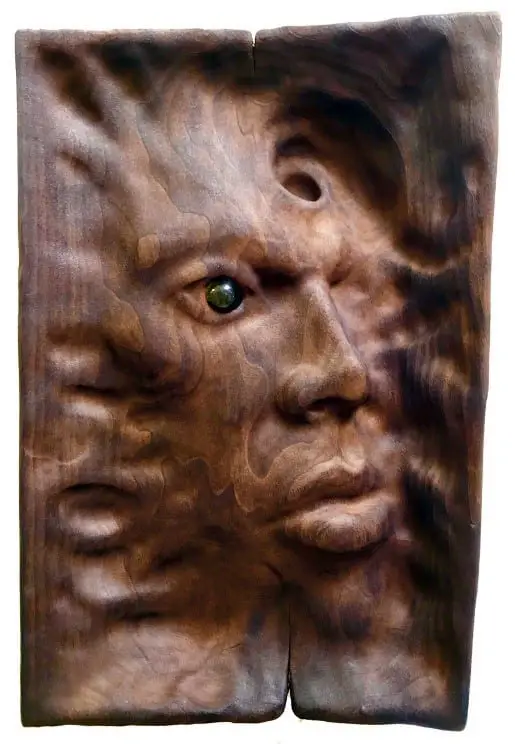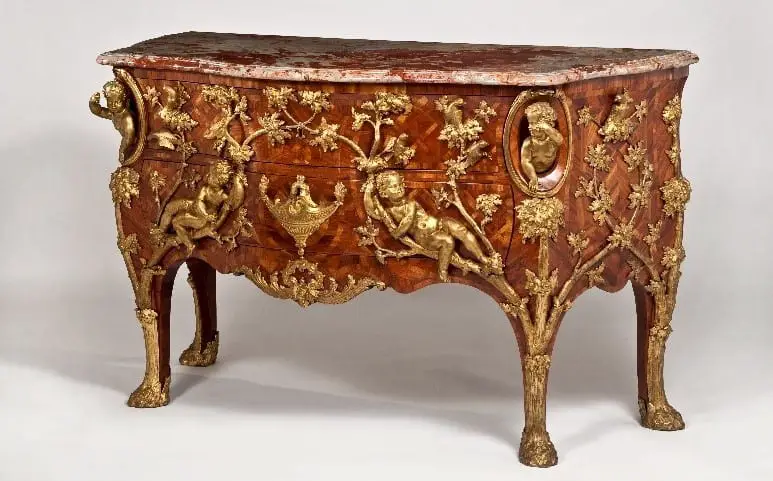All the way back to the 6th century, China was producing large amounts of Buddhist statues and scripture.
The increasingly strong need for large amounts of these masterpieces was intricately connected to the fact that larger amounts would make it easier to share the philosophy of the Buddhist monks with more people.
For the sake of spreading Buddhism, writing down the postulates on paper was just the very first step of a long journey.
As a result of these demands, the engraved block printing technique was born in ancient China during the reign of the Tang Dynasty.
Tracing the Roots and the Specifics of the Ancient Chinese Engraved Block Printing Technique
China gave rise to three distinct types of printing techniques, namely engraved block printing, wooden movable-type printing, and registration printing.
Undoubtedly, the creation of the movable-type printing system was a remarkable invention not only for the country of China alone but for the entire world.
For how can we possibly imagine our lives without books?
“But I hope that I will never have a life that is not surrounded by books, by books that are bound in paper and cloth and glue, such perishable things for ideas that have lasted thousands of tears, or just since the most recent Harry Potter.
I hope I am always walled in by the very weight and breadth and clumsy, inefficient, antiquated bulk of them, hope that I spend my last days on this Earth arranging and rearranging them on thrones of good, honest pine, oak, and mahogany, because they just feel good in my hands, because I just like to look at their covers, and dream of the promise of the great stories inside”
Rick Bragg
Movable-type printing forever changed the history of mankind and is deservedly ranked among the Four Great Inventions of China, in particular, paper, gunpowder, the compass, and of course, printing.
But long before the revolutionary invention of movable-type printing by the highly respected artisan Bi Sheng, engraved block printing was the most popular and extremely valuable printing system.
How Did the Engraved Block Printing System Work?

Being the earliest one, the engraved block printing system had many downsides but for the time of its use, it was unparalleled.
However, it did require an incredible set of skills in order to master this ancient technique.
Not only was the process of engraving the characters meticulous, time-consuming, and rather slow but what’s more, just a single tiny mistake could literally spell disaster for the master artisans applying the technique.
In the case of any accidental error, the entire page had to be started from scratch.
Interestingly, the engraving printing system of ancient China was also called block printing or whole-page printing.
In order to make a wooden block that would be then finely engraved and finally printed after utilizing both ink and paper, the Chinese artisans would opt for pear wood or Chinese Jujube tree.
The grain of pear trees is typically straight and with a very uniform, fine texture. Nonetheless, it is easy to work with whether it comes to using hand tools or machine tools, even though the latter is irrelevant to traditional Chinese whole-page printing.
Jujube trees, also known as Chinese date, are fruit-bearing, small deciduous trees or shrubs. Jujube timber is very strong, hard, and durable.
The texture is fine and uniform, similarly to that of pear wood. Jujube timber an exceptional choice not only when it comes to the traditional engraving printing technique of ancient China but also for the production of furniture ornaments, boat ribs, and violin parts across the globe.
Once the wood material was made into suitable blocks, the artisans would get down to engraving.
Knives were used to carve images and characters onto the wooden blocks, following a set of utterly important and specific rules.
Since the engraved characters had to be transferred onto paper after the application of ink, they had to be carved in a mirror-like manner. After being carefully covered with ink, the engravings were suitable to bring into contact with either paper or cloth.
Nowadays, the ancient Chinese engraving technique has underwent a spectacular revival, mostly thanks to the massive boom of DIY tutorials that are widely available on the web.
The Rise of the Engraved Block Printing Technique during the Reign of the Tang Dynasty
According to historians, it was approximately at the very turn of the 7th century AD that the engraved block printing technique was born.
Fortunately, there are several important documents dating back to the Tang Dynasty that describe not only the invention but also the application of the ancient technique at that time.
One of these documents – Chang King Collection–was printed in large quantities which would have been impossible to achieve if it wasn’t for the ancient engraving block printing technique.
In the introduction of BaiJuyi’s Chang King Collection, a reference points out to the fact that the poems of both BaiJuyi and Yuan Zhen were widely read. Moreover, the document mentions that the poems were published in quantities as to be sold in bookstores.
Interestingly, the Chinese government banned private printing in 835. That’s because private publishing workshops printed very large quantities of calendars.
But more importantly, this written evidence reveals that the engraving printing technique was very widely used in the 9th century.
With this in mind, experts believe there’s a high probability that the technique was invented earlier than what the survived written evidence proves.
Looking into the Earliest Examples of the Engraved Blocks Printing Technique
The best-known example of the ancient Chinese engraved blocks printing technique – the Diamond Sutra, has earned world recognition. The Diamond Sutra is estimated to date back to the year 868. It was unearthed in Dunhuang about a millennia later.
Diamond Sutra is impressive for its simple yet heavy-colored illustrations.
The paintings are especially delicate, and the cutting is considered superbly skilled. When it comes to the ink printing, it was even, smooth, and clear, pointing out to the high artistry of the craftsmen.
Due to all the fine aspects of the Diamond Sutra, historians further highlight that the printing technique which was applied for the production of this particular scroll was already very mature.
Even though it is the earliest example that has made it to the present day, the mysteries regarding the exact time of origin of the ancient Chinese engraving block printing remain unsolved up-to-date.
Another important print that was made through the application of the ancient Chinese printing technique dates back to the Empress Wu Zetian period (690-750). Empress Wu Zetianwas also a part of the Tang Dynasty.
The print includes the Pure Light Dharani Sutra which was unearthed in Gyeongju province, Korea, and in particular, in the Sarira pagoda in the Pulguksa Temple.
The other print is the Million Sutra which was created before 770 A.D.
Woodblock Printing Evolution in the Song, Ming, and Qing Dynasties
The Song Dynasty marked an important era in Chinese history that lasted from 960 to 1279.
In fact, the reign of the Song Dynasty is broadly referred to as one of the most brilliant cultural epochs in the entire history of the country of China.
During this period, the engraved block printing technique was further upgraded.
The carving art that played such a huge, crucial role in the printing process was beautifully refined.
Nonetheless, better materials in terms of both ink, paper, as well as the tools of the gifted artisans were introduced and put into practice.
On the other hand, proofreading was brought to another level of perfection, minimizing the chances of even the tiniest mistakes to occur once the wood blocks were inked and the engravings were printed onto paper.
Special types of characters known as Song typefaces emerged during the reign of the Song Dynasty, too.
But later on, the Ming Dynasty reached new dimensions of upgrading the ancient engraving printing technique. The Ming Dynasty, also known as the Great Ming Empire ruled the country for 276 years, starting from 1368 and up to 1644.
It was in the late Ming Dynasty that color woodcut printing became popular.
Surviving books of theMin Qiji and Ling Mengchu families are estimated to have been printed in three-color, four-color, as well as five-color prints.
The different kinds of printed books are estimated at 145.
Most noteworthy, not only the numbers are impressive. These two families have left a sparkling trace in the history of Chinese printing as they have been involved in the family business of book printing and publishing for generations, as noted in The Cambridge History of Chinese Literature: From 1375.
However, tracing back the roots of color woodcut printing brings us back to the period of the Song, Liao, and Jin dynasties that extend from 960 to 1234.
The “Nama Sakyamuni Buddha” was found in Fougong Temple, Shanxi province, and it was printed in three colors. Experts believe that the NamaSakyamuni Buddha belongs to the Liao Dynasty period (980-1012).
The Qing Dynasty was the last one of the imperial dynasties that ruled China from 1644 to 1912.
During the reign of the Qing Dynasty, the woodblock printing technique did not only flourish but great efforts were also put to re-introduce the ancient beauty and wisdom of the engraving technique to the people.
Amazingly, there were more than forty printing workshops that were publishing in multi-color, as highlighted in the Aggregation of the Carvings in China.
During KangXi’s reign, the emperor commanded Cao Yin, the head of the Salt Administration for Liang-Huai Region, to establish the Yangzhou Poetry Bureau.

Furthermore, Cao Yin was in charge of inviting people who were skilled in woodblock printing to print more than 300 volumes of books. Dedicated artisans with extensive knowledge in engraving woodblocks and printing the completed text on paper gathered from all across the country of China.
It was then that one of the legendary woodblock prints – the Poetry of the Tang Dynasty was further refined and carefully proofread. Tang Dynasty poetry is looked upon as the zenith of Chinese poetry.
Thanks to all of these remarkable achievements, the Yangzhou region gained a solid reputation as one of the most famous woodblock printing regions in China.
Some of the unique examples of the color woodblock printing technique in the Qing period include the five-colorChuang-Sian-Jing-Kur, the four-color Imperial Tang and Song Collection, as well as the four-colorGuwenYuanjian, among others.
The Persnickety Engraved Block Printing Technique of China: Final Food for Thought

Traditional Chinese engraved woodblock printing is generally divided into four crucial steps, namely material preparation, woodcarving, inking, and imprinting.
But each of these seemingly easy-to-digest steps requires very deep knowledge, a lot of skill, and a lot of practice to be finely executed.
For instance, only the knife-using methods for woodcarving vary in more than a hundred different methods. Pine soot is used to make the ink through the application of a secret method that allows for the ink to become beautifully scented while ensuring that the color never fades away.
Once these major steps are completed, binding and layout accomplish the printing process.
Each of these steps is complex from a technical point of view but also exceptionally elegant from an aesthetic point of view.
How can we possibly imagine a more captivating, mesmerizing, artistic, and creative way of bringing a book to life?
While being a persnickety task, Chinese woodblock printing is, undoubtedly, one of the most beautiful methods of book printing that have ever been invented by mankind.
Remarkably, wood is once again the leading character in the history of human beings. Indeed, wood is the best natural material for the construction of homes, temples, vessels, and tools, and not to mention the sacred ceremonies all across the globe that evolve around woodworking and woodcarving.
But what’s more, without wood, our society would have been deprived of literacy and shared knowledge that is profound to both the upbringing and the progress of a healthy nation.
In a world where modern-day technology starts to push away traditions, the ancient crafts and knowledge such as that of Chinese engraved printing are becoming more and more important for the preservation of the millennia-old wisdom of humanity.
“I guess you can call me “old fashioned”. I prefer the book with the pages that you can actually turn. Sure, I may have to lick the tip of my fingers so that the pages don’t stick together when I’m enraptured in a story that I can’t wait to get to the next page. But nothing beats the sound that an actual, physical book makes when you first crack it open or the smell of new, fresh printed words on the creamy white paper of a page turner”
Felica Johnson













